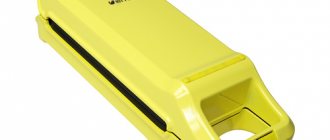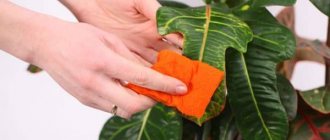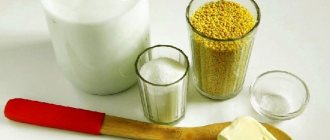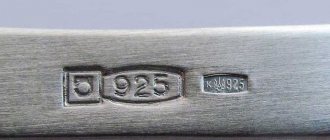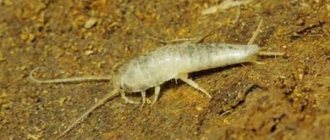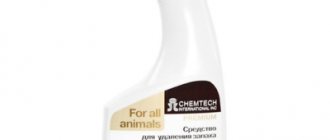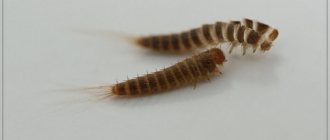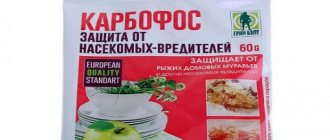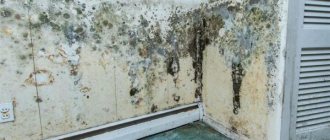Proper rat baiting
All their lives people have been looking for ways to fight rats. Many methods have been proposed to combat them and they are all being improved and developed. But rats are not stupid creatures and, unfortunately for us, they have learned to adapt to some poisons, and also easily bypass the traps you make.
Today, in order to exterminate parasites, the following methods are used:
- Poisons and chemicals. The price range is affordable. You can purchase various poisons and chemicals at any store. There is a significant drawback - rats die in places that are difficult for humans to reach, and accordingly, a cadaverous smell begins to spread in the apartment. This is why it is recommended to use traps in apartments or residential buildings, especially if you don’t have many rats.
- Lethal rat traps. If you live in an apartment and you have rats, this is a great way for you. Once a parasite falls into a trap, it can no longer get out. You simply take out the rat and destroy it. There are many variations of such traps. From mechanical traps to electrical exterminators.
- Non-lethal traps. Such traps do not kill pests, they simply drive them and lightly press them into a confined space. This method is not entirely effective, since if the pest gets out of the trap, it can bring all its offspring with it. You will waste extra energy and nerves to remove them. If you have a decorative rat as a pleasure, then this method is for you. You will catch her and not kill her.
- Repellers . Various chemical and biological substances are used here to drive away the parasite. Often, they are simply laid out where the rat hole is located. Here you can use substances such as: mint, bay leaf, onion, garlic. Those who have a summer house know that regular cat litter will do. Because rats smell cats and try to leave the room. If you look at it from a scientific point of view, this method has not proven its effectiveness, but people still use it.
- Favorite pets. Of course, what would we do without them? Everyone knows that rats are afraid of animals and therefore this method cannot be eliminated. Of course, it is not as effective as, for example, poisons and chemicals, but the smell of pets, no matter how cool, repels rats. And some dogs are specially trained to catch these parasites. Here it is worth paying attention to the fact that rats are not afraid of anything at all and can fight back and fight with your pets.
For prevention purposes, you can take the following steps: eliminate unsanitary conditions completely, cut off any access to food and water for them, seal all the cracks in the house through which they can get into your house.
Catching rats. What you should know
Rats are smart creatures and sometimes catching them in traps is quite problematic. Here you need to adhere to the following rules:
- Before setting traps, you need to get rid of all crumbs, food, and water in the house. Carefully check all cabinets where food is stored for holes and cracks. Maintain hygiene, ventilate the room and take out the trash to deprive rodents of their last opportunity to eat. Rats, in the absence of food, will be more willing to fall into your traps.
- Traps should not be placed in a random order, but where the approximate location of the rats is in your home. Find the entrances to the burrows along the walls, also pay attention to where there is a large accumulation of parasite feces and place them there. Here
- You need to understand that if you place a trap in the center of the room, it will not bring you success, since rats run along the walls and hide from people’s eyes.
- Rats have a very developed smelling apparatus, which is why do not touch traps with your hands, only with gloves. All traps must be clean and free of foreign odors. Before using the trap, you must rinse it well and only then use it. And this procedure needs to be done several times. After you catch a rat, it is necessary to wash the trap, because the next victim will not fall for it if the trap is not washed.
- Bait. It should be a product with a strong odor - smoked or fresh meat, slightly burnt lard, sausage, minced meat, fish, bread soaked in vegetable oil. Cheese is not always effective. The bait must be changed periodically to ensure it remains attractive to rats.
- It is necessary to select traps of appropriate quality. This is especially true in cases where a rat is caught alive - then products made from materials that it can easily chew through will be ineffective. If part of the trap is adjacent to a wall or floor, care must also be taken to ensure that the rodent does not damage them. When catching large rats, you should choose traps from which this rather large animal will not be able to escape and which it will not be able to throw.
It is worth remembering that when you remove a rodent from a trap, it is important to do this with gloves, since the slightest wound can lead to serious consequences and illnesses. After completing the procedure, be sure to wash your hands with soap and water.
Also pay special attention to children and pets. There are a lot of cases where small children fell into traps and traps. All traps are, of course, safe for human health, but some mechanisms are designed in such a way that they can cause injury to a cat, dog or child.
Now let's look at rat poison from rats.
There are several groups of toxic substances.
- Instantly toxic substances. If a rat swallows just such a bait, then death will occur after the poison enters the stomach, that is, immediately. As a rule, such poisons have a mummifying effect, which means that after the rat dies, it will not smell disgusting, but will immediately begin to dry out.
- Long-acting anti-inflammatory agent. If such bait gets into the rat's stomach, then death will occur within 1.5 -2 weeks, depending on how much poison got into the stomach. In any case, the toxic substance in the rat's body will slowly destroy the circulatory system.
Each type of poison is unique in its specificity. Some have a detrimental effect on the nervous system, some on the digestive tract, and some simply kill by causing paralysis.
Lethal doses
Poisons that are dangerous for animals, unfortunately, are also dangerous for people.
The drug rodenticide is a pesticide and is widely used in everyday life and agriculture. The composition, as well as the shelf life of the substance taken, affects the size of the lethal dose of rat poison for humans. The greatest danger is for those who have liver problems or children.
Rodenticides are classified as follows:
Poisons of the old generation, these include arsenic compounds (lethal dose of pure substance 0.1-0.2 g for an adult), lead (8-10 g), thallium sulfate (to die a person needs to drink about 1 g. ), yellow or white phosphorus (0.05−0.15 g), strychnine (0.03 g). However, the rodents gradually adapted to each of these drugs. In addition, such baits are too dangerous for the life of a person who interacts with them in any way.- Ratside (naphthylthiourea) and zinc phosphide are now practically withdrawn from circulation. The reason is increased toxicity. Being means of particularly rapid action and causing 100% death of pests two hours after taking the bait, these substances can be used under the supervision of a specialist only in cases where the use of other poisons is ineffective.
- Zoocoumarins are the most well-known rodent control agents available in the public domain. They lead to a deterioration in blood clotting, so the animals die from internal bleeding. Zoocoumarins come in the following varieties: a) First generation anticoagulants: Warfarin (an amount of 60 mg/kg of pure substance can kill a person), Ratindane, Isopropylphenacin. These substances accumulate in the body, act gradually and are eliminated through the rodent's renal system in three days. Since rodents have become resistant to such drugs, more effective means of combating these animals have been created. b) Second generation anticoagulants are much more toxic, act faster and have accumulative properties. These include: Brodifacoum, Bromadiolone (lethal amount - 300 mg/kg), Difenacoum and others. The most common poison, brodifacoum, causes poisoning in humans and animals.
Read also Bromine poisoning: bromism, symptoms and treatment
Appearance of poison
This question can be easily answered by those who have often encountered and poisoned rodents. But for those who are faced with such a problem for the first time, this is quite difficult.
There are several types of poison:
- powder;
- briquette;
- powder;
- pills;
- granules.
Also, the difference between poison is that some have a smell that attracts pests, and some are simply odorless; the color palette of the poison is also different.
Also, the use of poisons can be in two variations:
- Just sprinkle the contents of the bag (everything is already packaged in it, and you don’t need to calculate the proportions).
- Scatter it on the floor, after mixing it with some kind of bait.
It is very important to be absolutely attentive in this matter. Poisons are very dangerous to human health and pets.
What does poison consist of?
To date, several groups of toxic substances have been identified.
The first drugs were made on the basis of substances such as arsenic, lead, yellow and white phosphorus and others. These are the most dangerous poisons not only for rats, but also for humans. These substances have an immediate effect on rats, paralyzing, poisoning and causing rapid death. Even the smallest dose will quickly kill a rat. Today there are some bans on the use of these substances. But some people still use these poisons to control pests as they provide instant results despite the fact that they can have a detrimental effect on human health.
The next generation of poisonous rodent control agents is based on components such as Brodifacoum, Flocusamen, Bromadiolone and others. Here the drug is based on zinc phosphide. These drugs also act instantly on parasites, but if you follow all safety rules, they are not harmful to human health. Therefore, before using these drugs, read the instructions.
Substances with long-term effects. These substances work a little differently and when the poisons enter the rat’s body, blood clotting gradually begins, after which death occurs. It is interesting that the rats do not understand where they are in danger from eating this poison and gradually they die. But over time, they may develop immunity to this type of poison.
How does rat poison work?
If used incorrectly, rat poison can cause many problems, poisoning not only rodents, but also household members. Therefore, it is necessary to use toxic substances strictly according to the instructions, observing dosages and safety measures.
TYPES OF TOXIC SUBSTANCES
There are many poisons against pests. They all have different compositions and differ in the way they affect the rodents’ body. The effectiveness of rat poison and its toxicity to humans depend on the specifics of the active substance and its concentration. The most popular pasyuki poisons may contain the following toxic components: zinc phosphide; warfarin; arsenic; thallium; lead; phosphorus; strychnine. The compound of phosphorus and zinc is very toxic. It has a detrimental effect on internal organs (liver, heart, kidneys), inhibits the activity of the nervous system, and irritates the respiratory tract. A high concentration of the component in the drug is fatal for the rodent. To prevent a person from being poisoned by zinc phosphide vapor, it is necessary to use the correct preparations in which the content of the toxic component does not exceed the permissible level. The substance warfarin thins the blood of a rodent, which causes problems with the circulatory system. As a result of poisoning, the pest dies from bleeding. Arsenic and its chemical compounds are very poisonous. Penetrating into the rodent's body along with poisoned food, arsenic-containing components cause severe pain, vomiting, and depression of the nervous system. Extreme caution must also be taken with such a substance, because it can even poison a person. Preparations based on thallium and lead are highly toxic. In rodents, they cause deterioration of the nervous system, hair loss and ultimately death. Extreme care must be taken with drugs containing high concentrations of lead and thallium - they are dangerous to humans. It is impossible to purchase yellow and white phosphorus in their pure form, but preparations based on it are actively used to bait rats. The chemical element attacks bones and bone marrow. In small pests it can cause necrosis of the jaws. Phosphorus is also very harmful to humans, so preparations based on it are not very popular. Strychnine kills all living organisms and is good at killing rats, mice and other pests. But it is so toxic and dangerous to humans that it is practically not used.
DIVERSITY OF POISONS AND THEIR EFFECTS ON PESTS
Poisons against rats can be addictive to rats. If an animal swallows a poisoned bait with a small concentration of poison and does not die, then over time it will develop an aversion to this substance, and the drug will be powerless in the fight against rodents. Therefore, poisons for deratization are constantly being improved. The most ineffective poisons are those containing thallium, lead and arsenic. Such poisonous components are obsolete and are not particularly popular. Toxic substances act slowly. Poisoned animals may writhe in death throes for 2 days. To enhance the toxic effect of arsenic-based drugs, manufacturers add other toxic components: white and yellow phosphorus, thallium sulfate, strychnine. The combination of such substances kills not only rats and mice, but can kill pets and cause irreparable harm to human health. The fact is that the harmful components of the drug can be absorbed into the surface on which they are applied. Over time, the effect of the drugs does not decrease, and they continue to poison the person. The most modern and advanced poisons against rats are zoocoumarins. They contain anticoagulants that block the animal's blood from clotting. Once the pest enters the body, zoocoumarin causes internal bleeding and death. Through natural openings in the rat’s body, poisoned blood flows out and poisons its relatives. Anticoagulants for rats come in first and second generation. First generation drugs are less toxic and can be completely excreted by animals through the kidneys within 3 days. Such components act very slowly. Over time, rodents become accustomed to them and they lose their effectiveness. Therefore, second generation zoocoumarins are used. They are not excreted by the kidneys and are not addictive. Accumulating in the rodent's body, they cause its death.
RAT VERSUS RATS
One of the most common means for deratization is ratsid. This drug is produced on the basis of naphthylthiourea. It is believed that the product is excellent for fighting rats. It has almost no effect on domestic mice and voles. The substance effectively affects almost all rats; death occurs within the first hours after consuming the poisoned bait. Complete death in all individuals is observed on the 3rd day. Krysid is highly toxic. It affects the blood vessels in the lungs, as a result of which the respiratory organs swell and the rat dies from suffocation. Ratside is many times more toxic than compounds of barium, fluorine, phosphorus or arsenic. Therefore, such rat poison is very harmful to humans. If you accidentally take it in a large dose, you can get pulmonary edema and die from asphyxia. Therefore, the poison should be stored in places inaccessible to children and pets. A concentrated solution of the drug can kill a pig or dog. Rasid has the appearance of a gray powder and has a specific odor. To poison rats with it, the drug is mixed with bait: bread crumbs, minced meat or fish, porridge, vegetable oil. You can dissolve it in water and pour the solution into drinking bowls that should be left on the floor. Due to its danger, the substance has recently been used rarely and only in cases where other drugs are ineffective.
RAT POISONING AND CONSEQUENCES
If you use the substance incorrectly or use it without observing the proportions, then poison from rats can easily cause considerable harm not only to them. When using potent poisons and violating safety precautions, an adult can be poisoned. Poisonous drugs can be purchased in specialized stores and you can carry out deratization yourself. But it is better to seek help from specialists who know the rules for using the products and can guarantee the quality of the work performed. Rat poisons have a small concentration of toxic substances. To receive a lethal dose of poison, an animal must feed on poisoned bait for about a week. And to kill a person, the pieces of poison must be of impressive size. But some toxins can enter the body through the respiratory tract or be absorbed through the skin. Therefore, it is necessary to work with poisoned baits in rubber gloves and a respirator. The entry of zoocoumarins into the human body can cause blood incoagulability, internal bleeding, and with prolonged use of toxic substances, the activity of the liver can be disrupted.
SIGNS OF POISONING AND FIRST AID
When poisoned by rat poison, signs of damage may appear 12-72 hours after the toxin enters the body. It all depends on the concentration of harmful substances and the state of human health. The main symptoms of poisoning are: loss of appetite; nausea; abdominal pain; vomit; diarrhea; weakness in the body; pale skin; headache. In very severe cases of poisoning with anticoagulants, bleeding from the nose, gums, the appearance of bloody traces in the stool, and red spots on the skin and mucous membranes may occur. If a toxic substance was accidentally swallowed, then it is urgent to take first aid measures: induce a gag reflex by inserting 2 fingers deep into the mouth and pressing on the root of the tongue; drink at least 3 liters of clean water; take a saline laxative; drink 4 tablets of activated carbon. If the poison gets on the skin, the affected area should be thoroughly washed with warm water and soap. The mucous membrane is washed with plenty of water. If the poisoning is severe, you should urgently seek medical help. To treat poisoning with anticoagulants, vitamin K1 is used, which neutralizes the effect of the toxin. In case of very severe poisoning, a blood transfusion is given.
Now on the site they read:
When and how to use diatomaceous earth or rock flour
How to choose mosquito repellents and use them correctly
Banana lovers advised to wash their hands more often
How to get rid of wasps in the country
How to properly treat grapes against mites
How to properly spray tomatoes against pests: calendar or based on the threshold principle
How to properly prepare an apartment for bedbug treatment?
2.3 kilos of flies in a week: how to get rid of insects
What dangers do poisons pose to human health?
All poisons are unique in themselves and there are a number of factors that have a detrimental effect on human health:
- The degree of toxicity of the drug.
- General state of human health.
- Age range of the patient.
- The dose that entered the victim's body.
- How the victim’s liver works.
In any case, even if you are a completely healthy person and you do not have any diseases or allergic reactions, play it safe and follow safety measures. Be sure to use gloves when handling the poison and do not smoke during the process. After you finish working, throw away your gloves and wash your face and hands with water.
The main thing is to ensure that the poison does not enter the stomach. If the poison enters the human body, intoxication will begin: dizziness, nausea, vomiting, and in some cases loss of consciousness is possible.
The most dangerous poisons are the first category; here everything can lead to death. This is where you need to strictly observe safety measures. Store these poisons in hard-to-reach places so that children and pets cannot get to them.
If you understand that there are a lot of rats on the property or in the house, then it is better to contact professionals so as not to risk your health again.
Of course, such a service costs a lot of money, but it’s better to spend it once than spend the rest of your life on restoring your health.
How to use konakion
The instructions for Konakion state that the medicine is administered in the first hours after the onset of clinical symptoms of poisoning. The earlier therapy is started, the greater the chance of full recovery.
In our store you can buy Konakion in the form of a solution or tablets.
Veterinarians have approved the standard dosage of Phytomenadione - from 2.5 to 5 mg per kg of body weight per day. Downward deviations are allowed - 1.5-2 mg per kg per day for large breed dogs with mild poisoning.
The duration of taking the drug is at least a month. The long treatment period is due to the prolonged removal of rat poison from the body. Most often, owners do not know the name of the rodenticide ingested by the dog. Therefore, doctors focus on the maximum period of residence of the toxic substance in the tissues of the animal.
It is advisable to give the daily dose in several doses to ensure a uniform concentration of Phytomenadione in the blood. It is better to take the tablets with food for better absorption and assimilation. Food during treatment should contain an adequate amount of fat, since Vitamin K1 is fat-soluble.
The drug is stopped only after the condition has completely stabilized and blood clotting tests have been carried out.
Which form of the drug is preferable?
Phytomenadione is administered into the body by injection or taken orally in tablet form.
Injection administration is used when the animal is vomiting and the tablets cannot be absorbed. In addition, injections with Vitamin K1 are given to dogs in an extremely weakened or unconscious state when they are unable to swallow.
It is optimal to administer Konakion subcutaneously. Intramuscular injections for poisoning with rat poison are fraught with extensive hemorrhages. Careful injection into a vein is allowed. Doctors try to use thin needles in order to minimally injure the vessel wall and not cause re-bleeding.
As soon as the animal’s condition has stabilized, you can switch to oral forms of Phytomenadione. The veterinarian calculates the daily dose, which is divided into 2-3 doses. The required amount of the drug is given with a small amount of food containing fats.
Why doesn't Vikasol help?
Pharmacies offer another form of vitamin K, known under the trade name Vikasol. Distributed throughout the world under the international name - Menadion.
Despite the structural similarity, Vikasol should not be used even if rodenticide poisoning is suspected. Moreover, menadione is not used in treatment regimens for typical rat poison lesions.
Vikasol is an inactive vitamin K3; such substances are called provitamins. The hemostatic effect will begin to develop only after a day, or even later. If the dog has eaten rat poison, using Vikasol instead of Konakion is fraught with the loss of precious time. In addition, Vikasol is prohibited by some states for use in veterinary medicine due to severe side effects when the dose is exceeded. Cases of toxic damage to the liver and red blood elements - erythrocytes - have been described.
Phytomenadione is closest in structure to natural vitamin K and is safe even when infused in high dosages.
First aid
First of all, immediately call an ambulance; do not rely on the fact that you yourself will be able to provide treatment.
Before the ambulance arrives, it is necessary to rinse the stomach. Pour a liter of water into the victim and induce vomiting, repeat the procedure at least 3 times.
The poison penetrates the human body within 30 minutes, so you must immediately drink activated carbon at the rate of 1 tablet = 1 kilogram.
If the victim begins to lose consciousness, give him access to fresh air and prepare ammonia.
The most important thing to remember is that rat poison is a highly toxic agent. You should not self-medicate, this can lead to disaster.
Symptoms of rat poison poisoning
The nature and intensity of the manifestation of signs of the toxin are influenced by the following factors:
- dose of poison received;
- method of entry into the body;
- chemical composition of the product;
- concentration;
- individual characteristics.
Since anticoagulants have become the most common method of killing gray rats and mice, the effect of toxins does not manifest itself immediately, but after 3-5 days.
In this case, the following signs of poisoning by rat poison are observed:
- weakness, apathy, lethargy;
- dizziness and severe headaches;
- pallor of the skin and mucous membranes;
- diarrhea;
- profuse and frequent vomiting;
- nosebleeds;
- the appearance of traces of blood in urine and feces;
- visual and hearing impairments.
This is the result of the action of the poison, so if you have the slightest sign of rat poison poisoning, you should consult a doctor. Even a small dose of rat poison can cause significant harm to the body. Only a competent medical specialist can determine the degree of poisoning and take effective measures.

